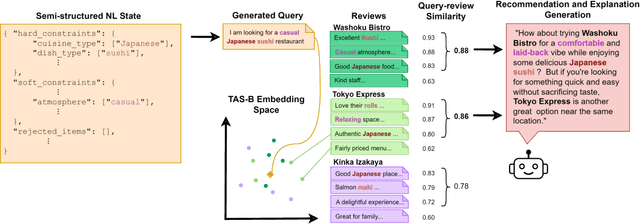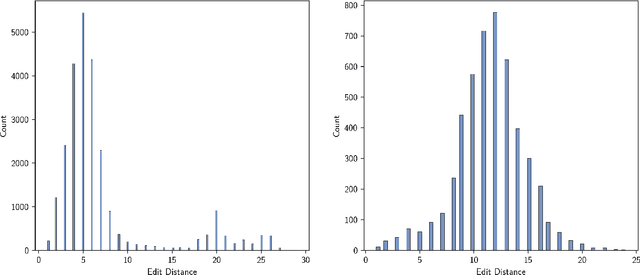Kathy Lin
Retrieval-Augmented Conversational Recommendation with Prompt-based Semi-Structured Natural Language State Tracking
May 25, 2024



Abstract:Conversational recommendation (ConvRec) systems must understand rich and diverse natural language (NL) expressions of user preferences and intents, often communicated in an indirect manner (e.g., "I'm watching my weight"). Such complex utterances make retrieving relevant items challenging, especially if only using often incomplete or out-of-date metadata. Fortunately, many domains feature rich item reviews that cover standard metadata categories and offer complex opinions that might match a user's interests (e.g., "classy joint for a date"). However, only recently have large language models (LLMs) let us unlock the commonsense connections between user preference utterances and complex language in user-generated reviews. Further, LLMs enable novel paradigms for semi-structured dialogue state tracking, complex intent and preference understanding, and generating recommendations, explanations, and question answers. We thus introduce a novel technology RA-Rec, a Retrieval-Augmented, LLM-driven dialogue state tracking system for ConvRec, showcased with a video, open source GitHub repository, and interactive Google Colab notebook.
Beyond the training set: an intuitive method for detecting distribution shift in model-based optimization
Nov 09, 2023



Abstract:Model-based optimization (MBO) is increasingly applied to design problems in science and engineering. A common scenario involves using a fixed training set to train models, with the goal of designing new samples that outperform those present in the training data. A major challenge in this setting is distribution shift, where the distributions of training and design samples are different. While some shift is expected, as the goal is to create better designs, this change can negatively affect model accuracy and subsequently, design quality. Despite the widespread nature of this problem, addressing it demands deep domain knowledge and artful application. To tackle this issue, we propose a straightforward method for design practitioners that detects distribution shifts. This method trains a binary classifier using knowledge of the unlabeled design distribution to separate the training data from the design data. The classifier's logit scores are then used as a proxy measure of distribution shift. We validate our method in a real-world application by running offline MBO and evaluate the effect of distribution shift on design quality. We find that the intensity of the shift in the design distribution varies based on the number of steps taken by the optimization algorithm, and our simple approach can identify these shifts. This enables users to constrain their search to regions where the model's predictions are reliable, thereby increasing the quality of designs.
 Add to Chrome
Add to Chrome Add to Firefox
Add to Firefox Add to Edge
Add to Edge